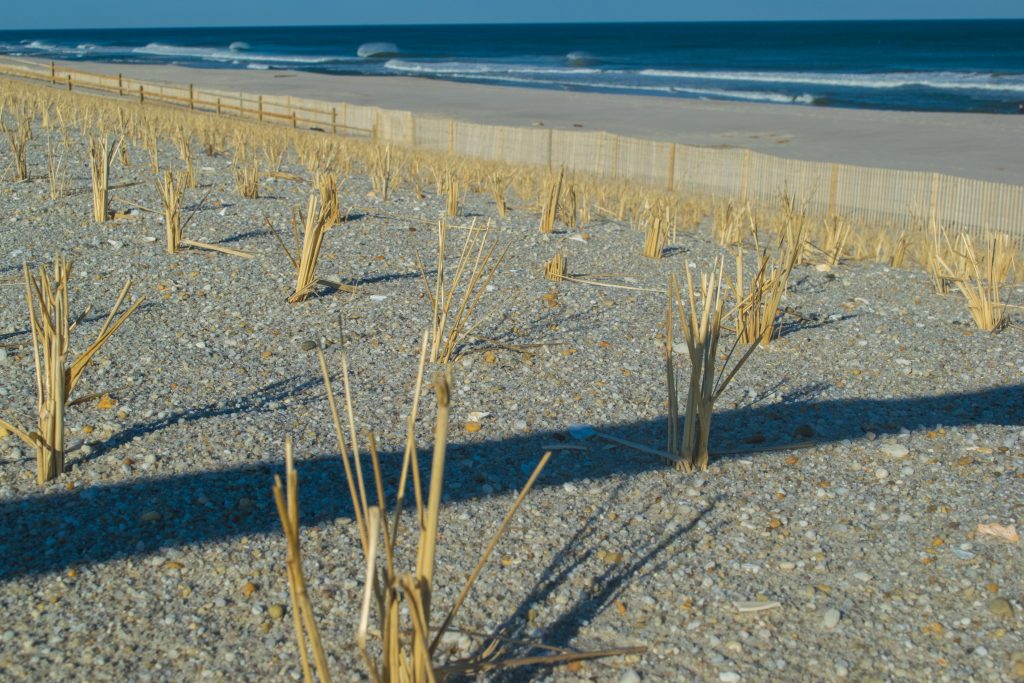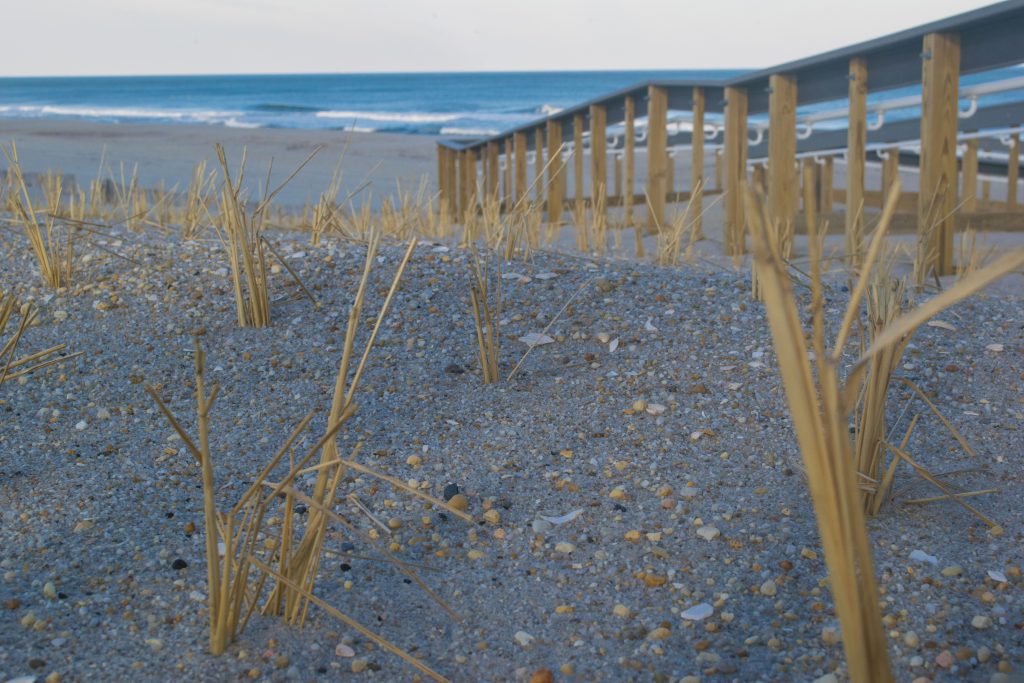Across the barrier island, dune grass is quickly sprouting after being planted by construction crews working on the ongoing beach replenishment project.
As the March wind howled Monday afternoon, Shorebeat took a look at dune grass in three sections of Brick Township: Brick Beach III, Brick Beach I and Normandy Beach.
Brick Beach III is among a group of island-wide communities that saw replenishment. Now that the sand has been pumped, 175 acres of dune grass is being planted, with the seedlings being located 18-inches apart from one another. As the years pass by, the plants will grow roots that will anchor the sand in place, providing a natural – yet engineered – protective layer to ensure the integrity of the island.
Brick Beach I was also included, of course. The grass species itself is American Beachgrass, according to the U.S. Army Corps of Engineers, which is tolerant to salt spray, shifting sands and temperature extreme. In fact, it’s best to plant the seedlings in the winter so they can have a full cycle to grow over the warm season. In the case of our local island, the plantings were completed just within the recommended timeframe.
Perhaps the most important attribute of planting ample dune grass is that it allows the beachfront to become an attractive venue for other species as well. American beachgrass is a rapid colonizer that also has fibrous roots which can descend to depths of 3-feet to reach moisture. Beachgrass is instrumental in the development of dune stability, which opens up the dune to further colonization with a more diverse array of species like seaside goldenrod, sea rocket and beach cocklebur.

Advertisement

Seaside Heights & Seaside Park
In Seaside Heights, A $50M Flagship Building Rises Over the Boulevard in a Famed Location

Police, Fire & Courts
Ocean County Sheriff Establishes Drone Command Center in Seaside Heights Amid New Video











